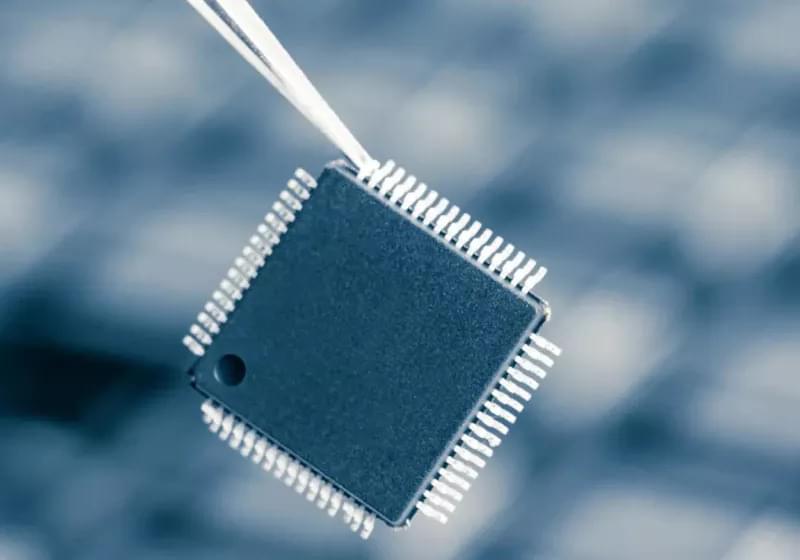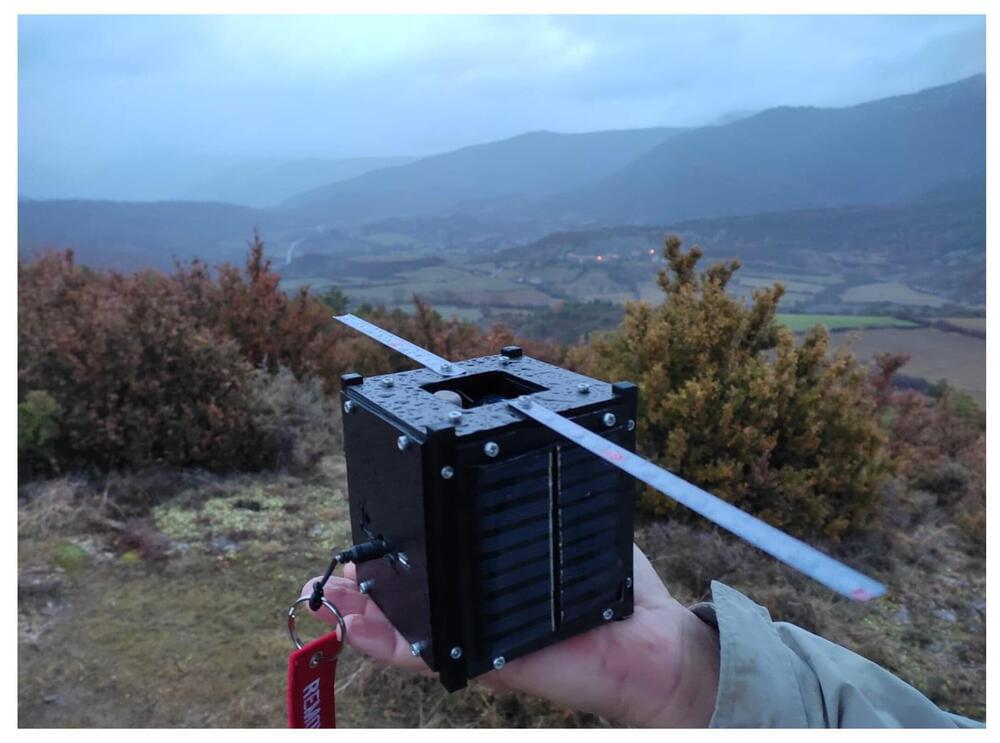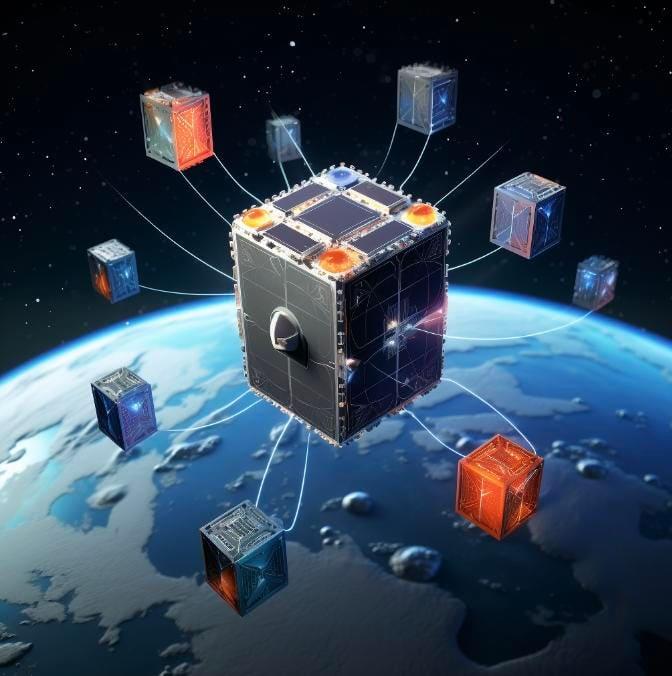Though SpaceX has yet to confirm, navigational warnings indicate a 4½-hour launch window will open from 11 p.m. Monday to 3:31 a.m. EST Tuesday.
Category: internet – Page 46
Why it matters: While AI algorithms are seemingly everywhere, processing on the most popular platforms require powerful server GPUs to provide customers with their generative services. Arm is introducing a new dedicated chip design, set to provide AI acceleration even in the most affordable IoT devices starting next year.
The Arm Cortex-M52 is the smallest and most cost-efficient processor designed for AI acceleration applications, according to the company. This latest design from the UK-based fabless firm promises to deliver “enhanced” AI capabilities to Internet of Things (IoT) devices, as Arm states, without the need for a separate computing unit.
Paul Williamson, Arm’s SVP and general manager for the company’s IoT business, emphasized the need to bring machine learning optimized processing to “even the smallest and lowest-power” endpoint devices to fully realize the potential of AI in IoT. Despite AI’s ubiquity, Williamson noted, harnessing the “intelligence” from the vast amounts of data flowing through digital devices requires IoT appliances that are smarter and more capable.
👉For business inquiries: [email protected].
✅ Instagram: https://www.instagram.com/pro_robots.
DARPA: robots and technologies for the future management of advanced US research. DARPA military robots. DARPA battle robots. Military technologies DARPA. Battle robots of the future. Technologies of the future in the US Army.
0:00 Introduction.
01:03 DARPA mission.
01:30 Project ARPANET
02:09 First “smart machine” or robot.
03:05 The first self-driving vehicles and the first Boston Dynamics robot.
03:31 DARPA robot racing.
04:08 First Boston Dynamics Big Dog four-legged robot.
04:43 Energy Autonomous Tactical Robot Program.
05:00 Engineering Living Materials Program.
05:45 Spy Beetles — Hybrid Insect Micro-Electro-Mechanical Systems.
06:03 Robot Worm — Project Underminer.
06:23 DARPA — The Systems-Based Neurotechnology for Emerging Therapies.
06:57 Robotic pilots with artificial intelligence.
07:30 Artificial Intelligence Combat Air System — Air Combat Evolution.
08:14 UNcrewed Long Range Ships — Sea Train.
09:24 Project OFFSET
10:15 Project Squad X
10:47 Battle of human robots on DARPA Robotics Challenge.
Defense Advanced Research Projects Agency, abbreviated DARPA, or the Office of Advanced Research Projects of the U.S. Department of Defense, was established in 1958, almost immediately after the launch of the USSR Sputnik-1. The realization that the Soviets were about to launch into space not only satellites, but also missiles, greatly cheered up the government of the United States. The result was the creation of a unique agency with a huge budget, which could be spent at its own discretion. Watch a selection of the most unexpected, strange and advanced projects in the field of technology and artificial intelligence DARPA in one video!
Biological computing machines, such as micro and nano-implants that can collect important information inside the human body, are transforming medicine. Yet, networking them for communication has proven challenging. Now, a global team, including EPFL researchers, has developed a protocol that enables a molecular network with multiple transmitters.
First, there was the Internet of Things (IoT) and now, at the interface of computer science and biology, the Internet of Bio-Nano Things (IoBNT) promises to revolutionize medicine and health care. The IoBNT refers to biosensors that collect and process data, nano-scale Labs-on-a-Chip that run medical tests inside the body, the use of bacteria to design biological nano-machines that can detect pathogens, and nano-robots that swim through the bloodstream to perform targeted drug delivery and treatment.
“Overall, this is a very, very exciting research field,” explained Assistant Professor Haitham Al Hassanieh, head of the Laboratory of Sensing and Networking Systems in EPFL’s School of Computer and Communication Sciences (IC). “With advances in bio-engineering, synthetic biology, and nanotechnology, the idea is that nano-biosensors will revolutionize medicine because they can reach places and do things that current devices or larger implants can’t,” he continued.
What role should text-generating large language models (LLMs) have in the scientific research process? According to a team of Oxford scientists, the answer — at least for now — is: pretty much none.
In a new essay, researchers from the Oxford Internet Institute argue that scientists should abstain from using LLM-powered tools like chatbots to assist in scientific research on the grounds that AI’s penchant for hallucinating and fabricating facts, combined with the human tendency to anthropomorphize the human-mimicking word engines, could lead to larger information breakdowns — a fate that could ultimately threaten the fabric of science itself.
“Our tendency to anthropomorphize machines and trust models as human-like truth-tellers, consuming and spreading the bad information that they produce in the process,” the researchers write in the essay, which was published this week in the journal Nature Human Behavior, “is uniquely worrying for the future of science.”
Studies find a densely connected network of neurons that communicate over long distances, rather than across synapses.
It’s an open secret that generative AI is terrible at coming up with original and creative writing.
In many ways, that’s to be expected, given its inherent nature — machine learning systems typically churn through the internet and remix what they’ve gobbled up, often in nonsensical or uninspiring ways.
To remedy the situation, some of Silicon Valley’s biggest AI companies are now resorting to hiring poets and writers with humanity degrees, Rest of World reports, which is an ironic twist, considering publishers have been laying off writers and editors while making big investments in generative AI.
Researchers around the world are working on a network which could connect quantum computers with one another over long distances. Andreas Reiserer, Professor of Quantum Networks at the Technical University of Munich (TUM), explains the challenges which have to be mastered and how atoms captured in crystals can help.
The idea is the same: We use today’s internet to connect computers with one another, while the quantum internet lets quantum computers communicate with one another. But in technical terms the quantum internet is much more complex. That’s why only smaller networks have been realized as yet.
There are two main applications: First of all, networking quantum computers makes it possible to increase their computing power; second, a quantum network will make absolutely interception-proof encryption of communication possible. But there are other applications as well, for example networking telescopes to achieve a previously impossible resolution in order to look into the depths of the universe, or the possibility of synchronizing atomic clocks around the world extremely precisely, making it possible to investigate completely new physical questions.
It is estimated that 95% of the planet’s population has access to broadband internet, via cable or a mobile network. However, there are still some places and situations in which staying connected can be very difficult. Quick responses are necessary in emergency situations, such as after an earthquake or during a conflict. So too are reliable telecommunications networks that are not susceptible to outages and damage to infrastructure, networks can be used to share data that is vital for people’s well-being.
A recent article, published in the journal Aerospace, proposes the use of nanosatellites to provide comprehensive and stable coverage in areas that are hard to reach using long-range communications. It is based on the bachelor’s and master’s degree final projects of Universitat Oberta de Catalunya (UOC) graduate David N. Barraca Ibort.
The paper is co-authored by Raúl Parada, a researcher at the Telecommunications Technological Center of Catalonia (CTTC/CERCA) and a course instructor with the UOC’s Faculty of Computer Science, Multimedia and Telecommunications; Carlos Monzo, a researcher and member of the same faculty; and Víctor Monzón, a researcher at the Interdisciplinary Center for Security Reliability and Trust at the University of Luxembourg.
As part of pioneering the security of satellite communication in space, NASA is funding a groundbreaking project at the University of Miami’s Frost Institute for Data Science and Computing (IDSC) which will enable augmenting traditional large satellites with nanosatellites or constellations of nanosatellites.
These nanosatellites are designed to accomplish diverse goals, ranging from communication and weather prediction to Earth science research and observational data gathering. Technical innovation is a hallmark of NASA, a global leader in the development of novel technologies that enable US space missions and translate to a wide variety of applications from Space and Earth science to consumer goods and to national and homeland security.
With advances in satellite technology and reduced cost of deployment and operation, nanosatellites also come with significant challenges for the protection of their communication networks. Specifically, small satellites are owned and operated by a wide variety of public and private sector organizations, expanding the attack surface for cyber exploitation. The scenario is similar to Wi-Fi network vulnerabilities. These systems provide an opportunity for adversaries to threaten national security as well as raise economic concerns for satellite companies, operators, and users.









